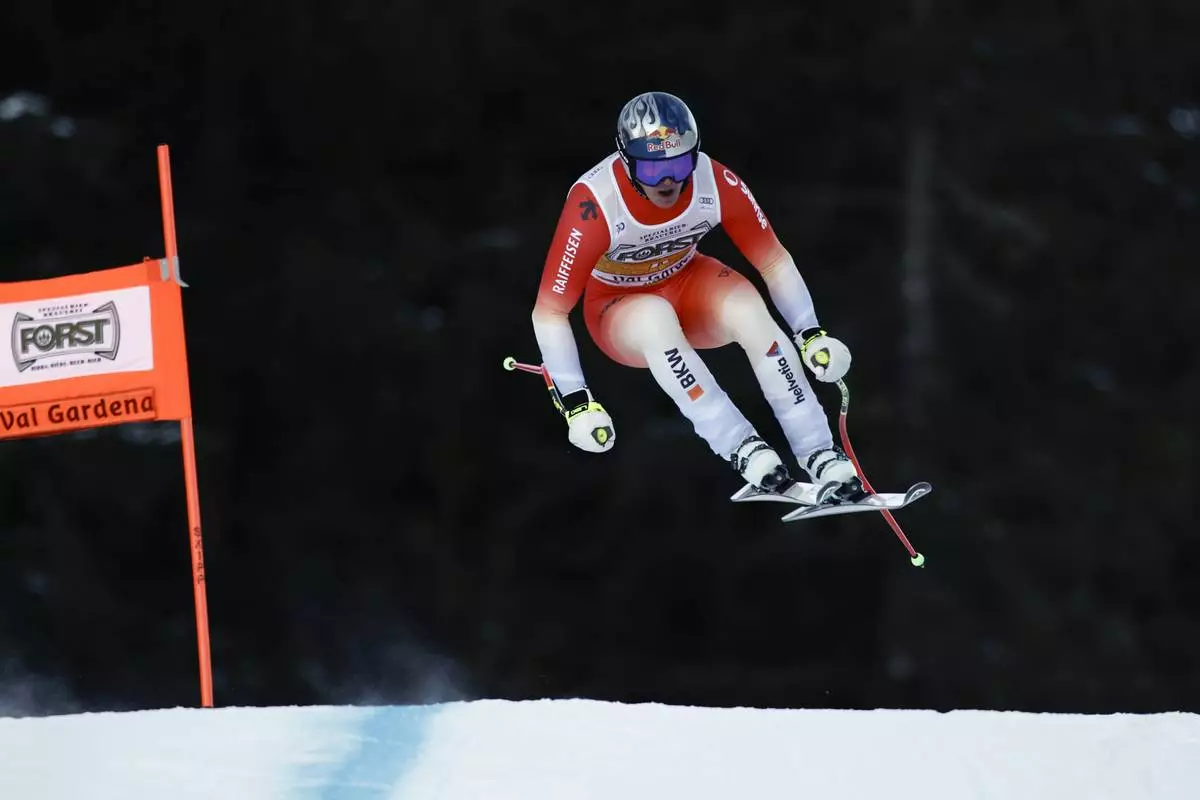WASHINGTON (AP) — One question will be asked over and over on election night: Who won?
The Associated Press will answer that question for nearly 5,000 contested races across the United States and up and down the ballot, from president and state ballot measures to a variety of local offices.
The AP has compiled vote results and declared winners in elections for more than 170 years, filling what could otherwise be a critical information void of up to a month between Election Day and the official certification of results.
What goes into determining the winners? A careful and thorough analysis of the latest available vote tallies and a variety of other election data, with the ultimate goal of answering this question: Is there any circumstance in which the trailing candidate can catch up? If the answer is no, then the leading candidate has won.
Race calls are based on provable facts, primarily from the AP’s vote count, which is compiled from state and local election offices around the nation.
As more and more ballots are tabulated starting on election night, the AP will monitor the incoming vote at the county level and analyze who is in the lead and what areas the votes are coming from.
At the same time, the AP tries to determine throughout the night how many ballots are uncounted and from what areas. State and local election officials don’t immediately know by election night exactly how many ballots were cast in every contest. Determining how many remain has become more complicated because of the growing number of ballots cast by mail that may arrive after Election Day, which is Nov. 5 this year.
This means there are usually no official and exact tallies of the outstanding vote to rely on once the vote counting gets underway. As a result, the AP estimates the turnout in every race based on several factors and uses that estimate to track how much of the vote has been counted and how much remains.
The AP also tries to determine how ballots counted so far were cast, and the types of vote — such as mail ballots or Election Day in-person — that remain.
That's because the method a voter chooses often speaks to whom they voted for. Since the issue of voting by mail became highly politicized in the 2020 election, most mail votes nationally have been cast by Democratic voters, while most in-person Election Day votes have been cast by Republicans.
In many states, it is possible to know which votes will be counted first from past elections or plans announced by election officials. In some others, votes counted so far are clearly marked by type.
This helps to determine if an early lead is expected to shrink or grow. For example, if a state first counts votes cast in person on Election Day, followed by mail-in votes, that suggests that an early Republican lead in the vote count may narrow as more mail ballots are tabulated. But if the reverse is true and mail ballots are counted first, an early Republican lead could be the first sign of a comfortable victory.
The AP’s analysis to determine the winners is also greatly informed by other election data, especially the long-standing voting trends in a given area. Past election results over time show that states and counties with a long history of lopsided Republican or Democratic victories tend to continue the same voting patterns from one election to the next.
Even in closely contested races, comparing current vote patterns with those in past races can provide important clues.
For example, if a Democratic candidate is performing a few percentage points better across all counties that have reported votes in a state a Democrat previously won by a narrow margin, that could be a sign of a more comfortable Democratic victory. But if the Republican is performing a few percentage points better, that could point to an exceedingly close race or even a flipped result.
Large changes in an area’s voting patterns that differ substantially from statewide trends are certainly possible but tend to take root over a time frame of multiple elections. This helps analysts understand whether one candidate’s lead is an expected result or a sign of tight race. It also helps determine whether the remaining uncounted ballots are from areas that would likely benefit one candidate over another.
Demographic data can also shed light on the vote count. For example, shifts that differ from statewide patterns might be explained by a shift among a specific group, such as Hispanic voters or white voters without college degrees.
Another tool available to the AP’s decision teams is AP VoteCast, a comprehensive, 50-state election survey that provides a detailed snapshot of who voted in an election and what was on their minds when they voted. Data from AP VoteCast makes it possible in some cases to call non-competitive or less competitive races as the polls close or shortly afterward with the initial release of votes.
When considering poll-close calls, the AP will only declare a winner if AP VoteCast data confirms the expected result in that contest based on past vote history and other preelection data.
In almost all cases, races can be called well before 100% of the votes have been counted. The AP’s team of election journalists and analysts will call a race as soon as a clear winner can be determined. That may sound obvious, but it is the guiding principle that drives the organization’s election race-calling process.
The AP’s race calls are not predictions and are not based on speculation. They are declarations based on an analysis of vote results and other election data that one candidate has emerged as the winner and that no other candidate in the race will be able to overtake the winner once all the votes have been counted.
The AP may delay calling a winner if the vote results go against the expected outcome of the contest as indicated by the available election data. In other words, if the vote results show a large lead for one candidate but some combination of the past vote history, demographic data or AP VoteCast data point to a different outcome, the AP would carefully review the vote results before making any determination.
In competitive races, AP analysts may need to wait until additional votes are tallied or to confirm specific information about how many ballots are left to count.
The AP may declare that a race is “too close to call” if a race is so close that there's no clear winner even once all ballots except for provisional and late-arriving absentee ballots have been counted.
Competitive races where votes are actively being tabulated — for example in states that count a large number of voters after election night — might be considered “too early to call.” The “too close to call” designation is not used for these types of races.
The AP may also decide not to call a race if the margin between the top two candidates is less than 0.5 percentage points unless it determines that the margin is wide enough that it could not change in a recount.
AP race calls are never made based on lobbying from campaigns or political parties or announcements made by other news organizations, or on candidate victory speeches. Although it will never call a winner based on a concession speech, in some cases, a concession is the final piece of the puzzle in confirming that there will be no recount in a close race.
Read more about how U.S. elections work at Explaining Election 2024, a series from The Associated Press aimed at helping make sense of the American democracy. The AP receives support from several private foundations to enhance its explanatory coverage of elections and democracy. See more about AP’s democracy initiative here. The AP is solely responsible for all content.

A screen shows a news program website on the U.S. elections as a traders of a foreign exchange dealing company looks on Wednesday, Nov. 4, 2020, in Tokyo. (AP Photo/Eugene Hoshiko)

FILE - In this Feb. 5, 2020, photo Associated Press Washington Bureau Chief Julie Pace, right, looks over a headline with deputy managing editor for operations David Scott in the newsroom at the Associated Press in Washington. (AP Photo/Jenny Kane, File)

FILE - Media organizations set up outside the White House, Friday, Nov. 6, 2020, in Washington. (AP Photo/Evan Vucci, File)



















